Every day since our current president and the Republican party came into power in the U.S. in 2016, man’s hatred for man is in my face. I wake up to it and it hounds me all day, on the internet, in my email inbox, on TV, even on comedy shows. There is no escaping the angst and disillusionment I feel every hour of the day due to this hatred swirling around.
On top of the daily assault, I came face to face with the issue in two fantastic museums in Louisville, Kentucky and Cincinnati, Ohio in late February and early March of this year. At the Muhammad Ali Center and the National Underground Railroad Freedom Center, I learned how man has been fighting against man throughout history, through war, slavery, racism, and sport.
At the Muhammad Ali Center in Louisville, I watched an excellent movie and exhibits about the famous boxer, Muhammad Ali. In his early days, he had quite an ego, and plenty of gusto, confidence, and bravado, but he grew into a man who lived by his convictions.
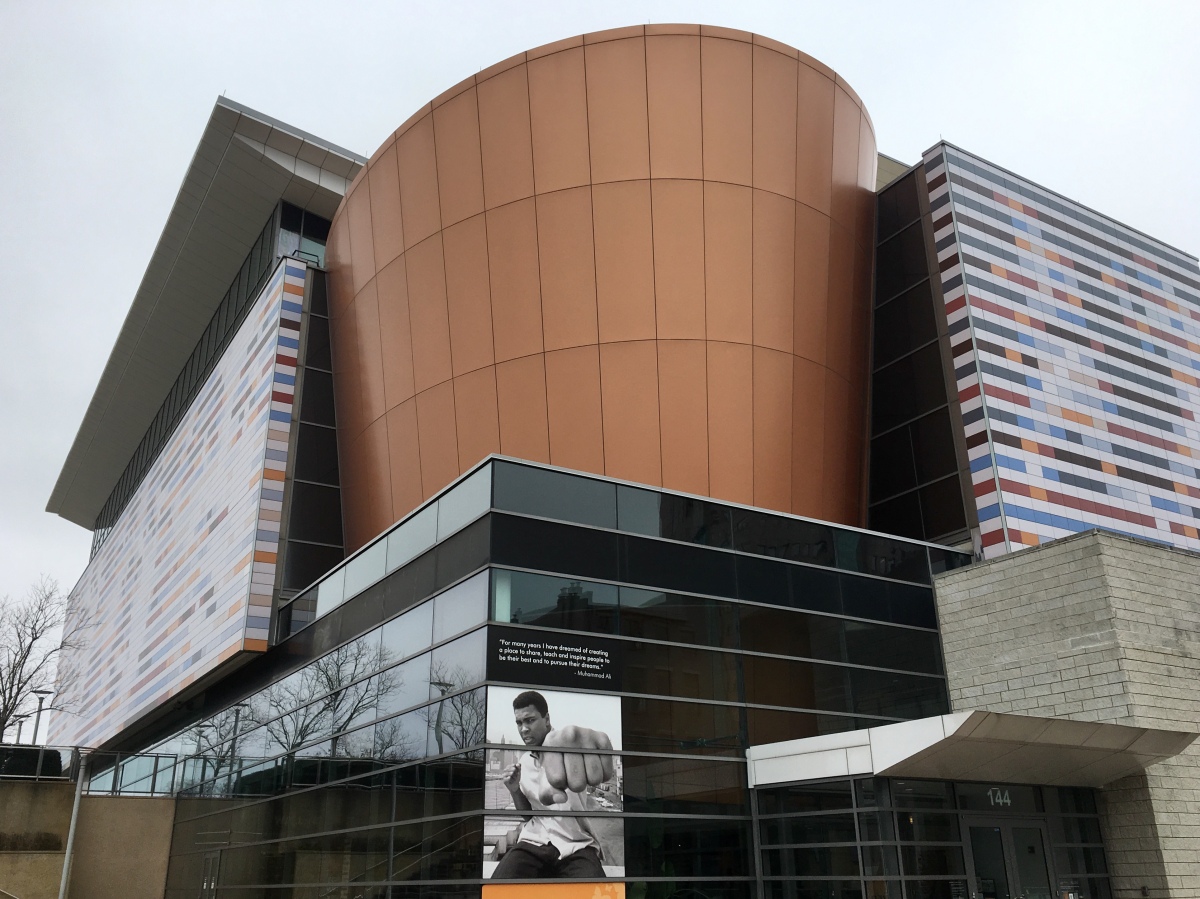
Muhammad Ali Center

Muhammad Ali Center

Muhammad Ali Center overlooking the Ohio River
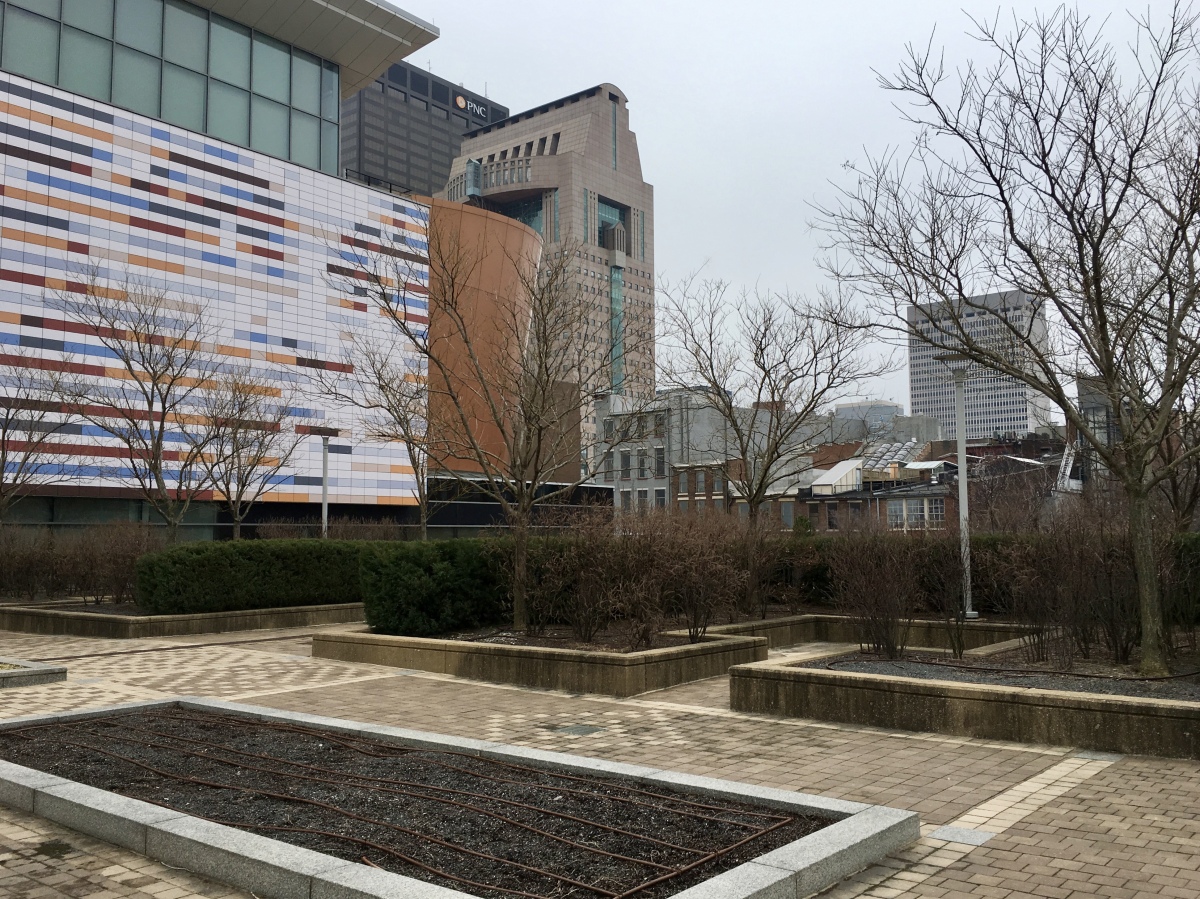
Muhammad Ali Center
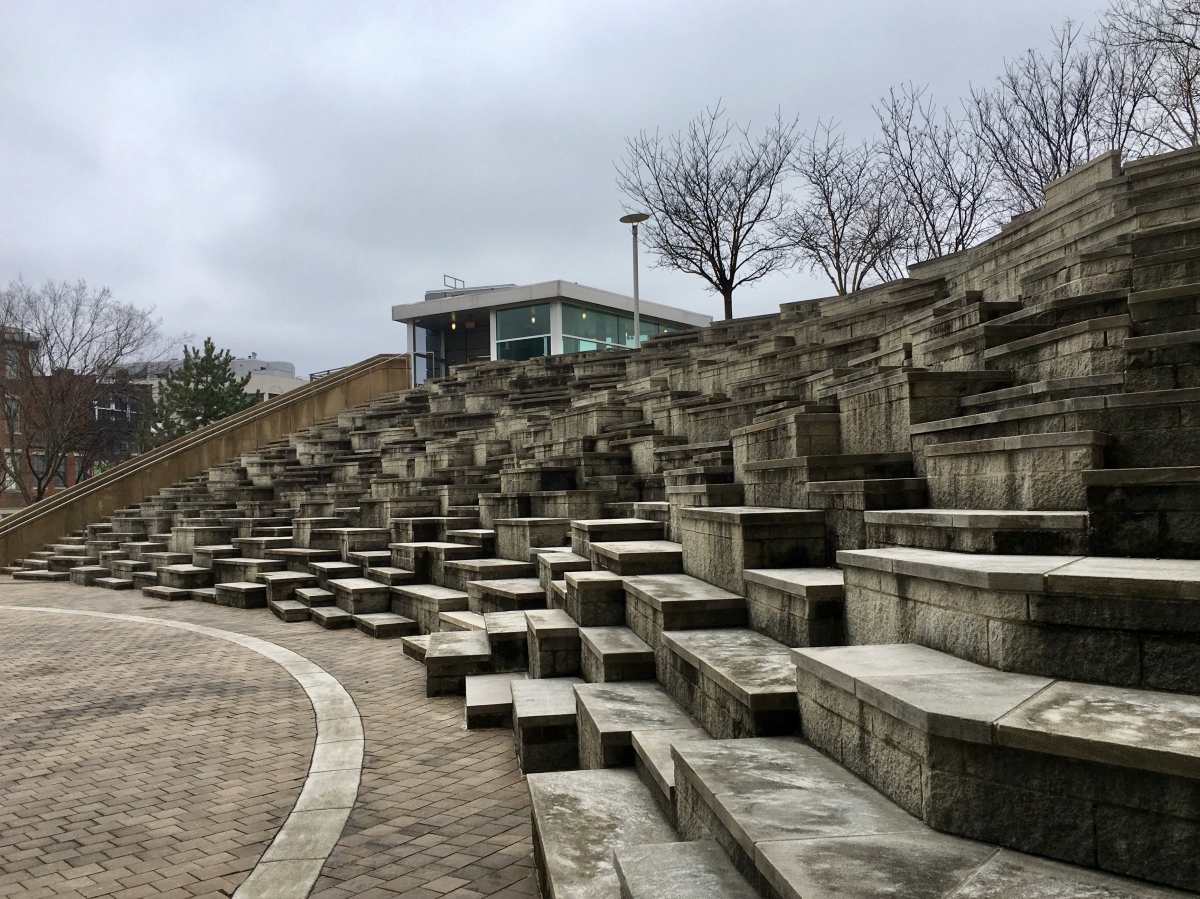
Muhammad Ali Center
Muhammad Ali, whose boxing career spanned the period from 1960-1981, talked about walking down the streets of Louisville, Kentucky and seeing signs forbidding “Negroes” from going to a show or eating in restaurants, despite the fact that they’d been working 310 years for America, sixteen hours a day without pay and fighting all the wars for the country. A century after emancipation, black resentment seethed, as blacks were still segregated and weren’t able to reap the freedoms, justice and equality promised by the U.S. Constitution.
Another exhibit showed white entitlement: “I see the Negro stepping on my rights. He is asking for more than is justifiably his,” said a financial manager in California.
Protestors adopted the non-violent resistance of Gandhi and Thoreau, interlaced with Christian principles. They quietly occupied and boycotted a Woolworth’s lunch counter in North Carolina. They took their battles to bus depots and train stations, insisting they had the right to interstate travel. They worked relentlessly to register to vote under draconian anti-registration tactics. They boycotted on the streets with signs: END SEGREGATION RULES IN PUBLIC SCHOOLS. AMERICA IS A POLICE STATE FOR THE BLACK MAN. Martin Luther King led protestors and made his “I Have a Dream” speech, inspiring thousands.
Finally, they realized America wouldn’t come around. Non-violent resistance was replaced with self-defense and fierce retaliation. Black Power emerged, declaring black identity, dignity and racial self-respect. They began to think the only thing white people could understand was violence. Then on April 3, 1968, Martin Luther King was assassinated with a sniper’s bullet. Riots broke out.
On April 4, 1968, Robert Kennedy said “What we need in the United States is not division; what we need in the United States is not hatred, what we need in the United States IS NOT VIOLENCE OR LAWLESSNESS; BUT LOVE AND WISDOM AND COMPASSION toward one another, and a feeling of justice toward those who still suffer within our country, whether they be white or they be black.” Two months later, Kennedy was also assassinated.
In the 1960s, the baby boom generation began to voice its views, to stand up for civil rights, social justice, cultural change, and political freedoms. The climate steamed with challenges to government policy, cultural values and social norms.
Muhammad Ali differentiated his boxing in the ring, a sport of man vs. man, by saying that in the ring there was a referee, three judges, an ambulance and doctors. He insisted it was not one nation against another or one race against another, or one religion against another. He called it the “art of boxing.”
Ali fought relentlessly throughout his life, for civil rights for African-Americans and against the Vietnam War, refusing to serve in the army when drafted; he considered himself a conscientious objector.



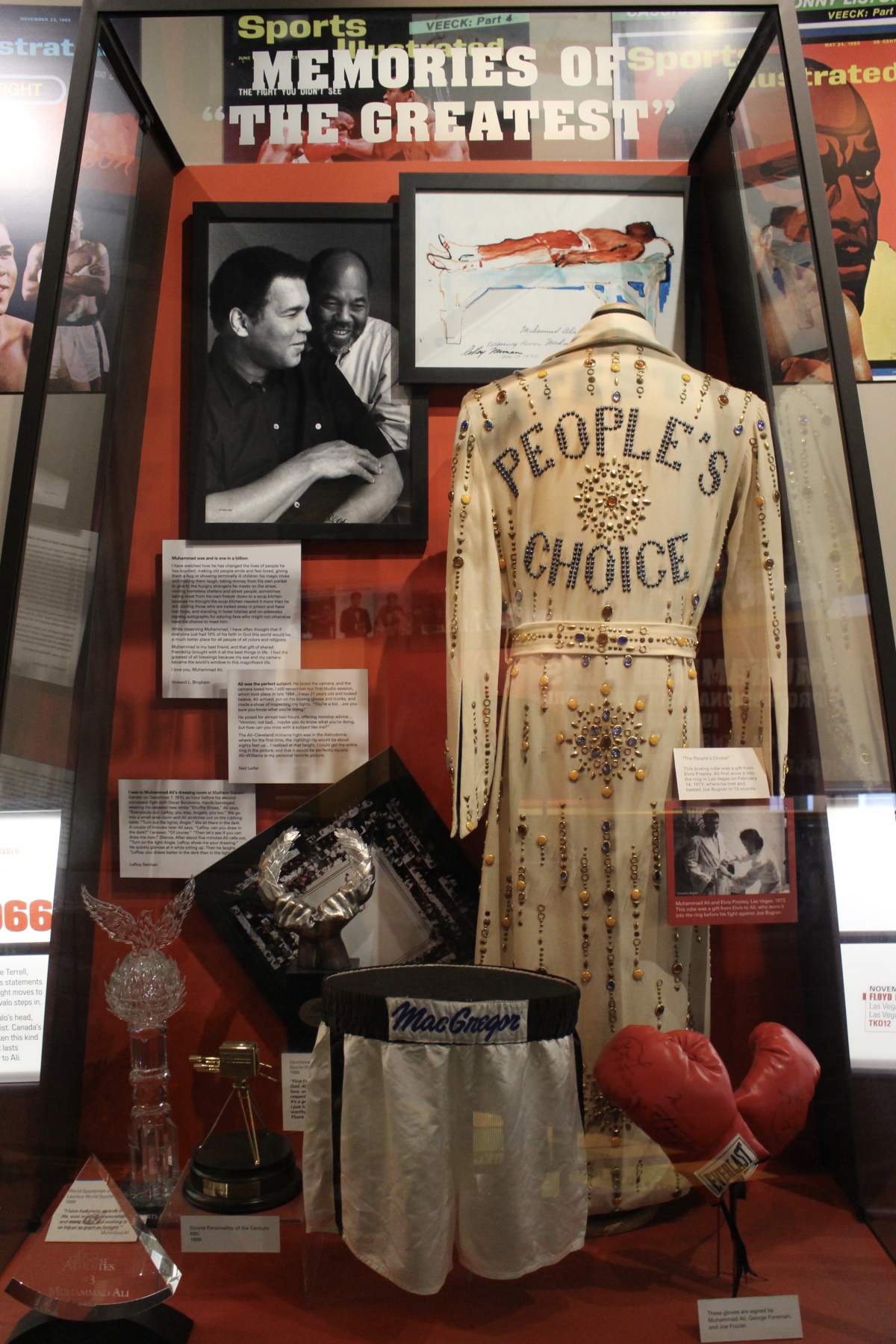
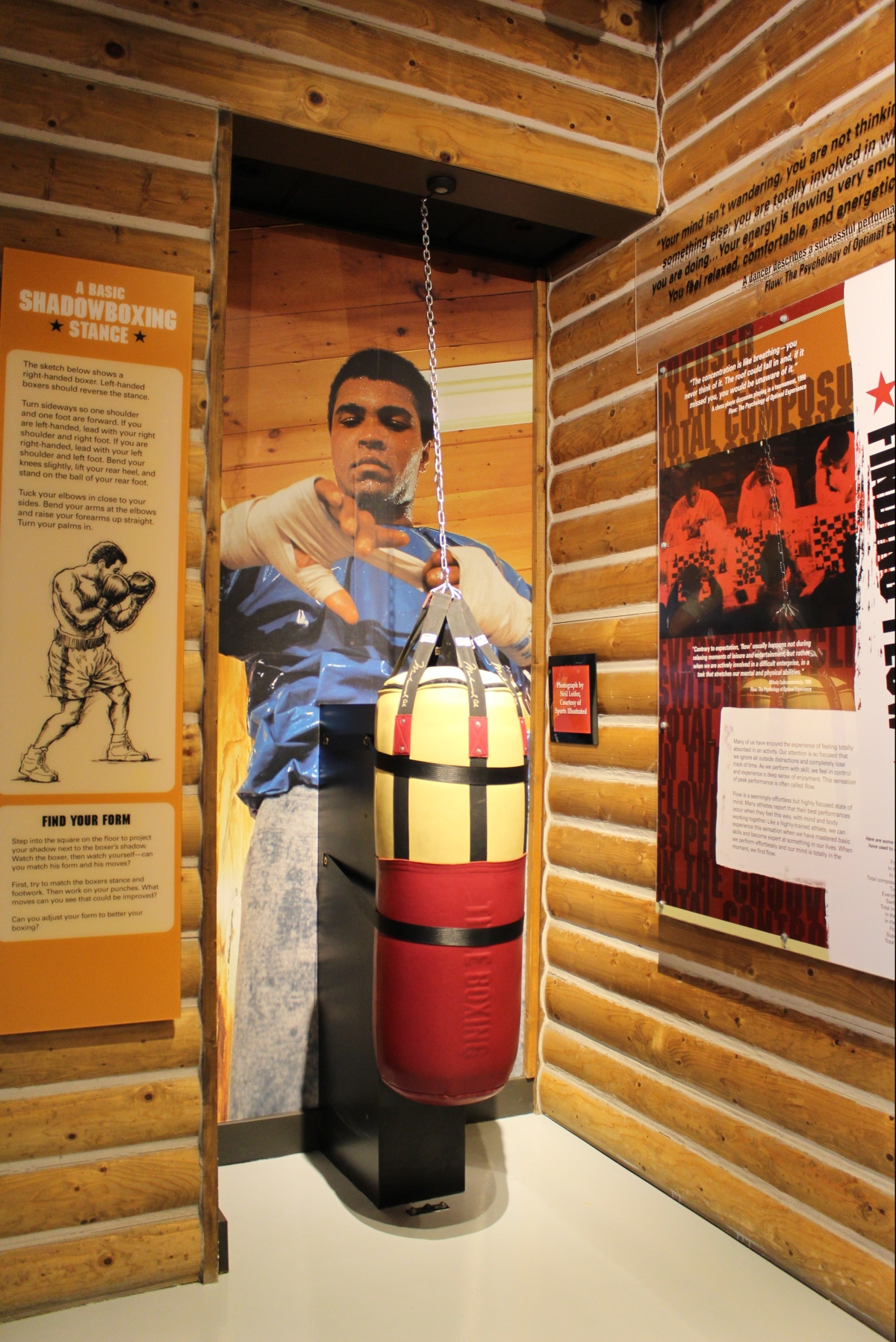



In Cincinnati, I visited the National Underground Railroad Freedom Center, whose mission is to eradicate modern-day slavery. Here, I learned about all the enslaved people in the world today, sex trafficking, the history of slavery in the Americas, the Civil War and the Emancipation Proclamation, the economic and other justifications for slavery (greed!), and the brave people who fought not only against slavery, but also against dehumanizing behavior by white people toward people of color.

National Underground Railroad Freedom Center
I learned 12 million children are trafficked each day, for labor, sex or soldiering.

Slavery around the world
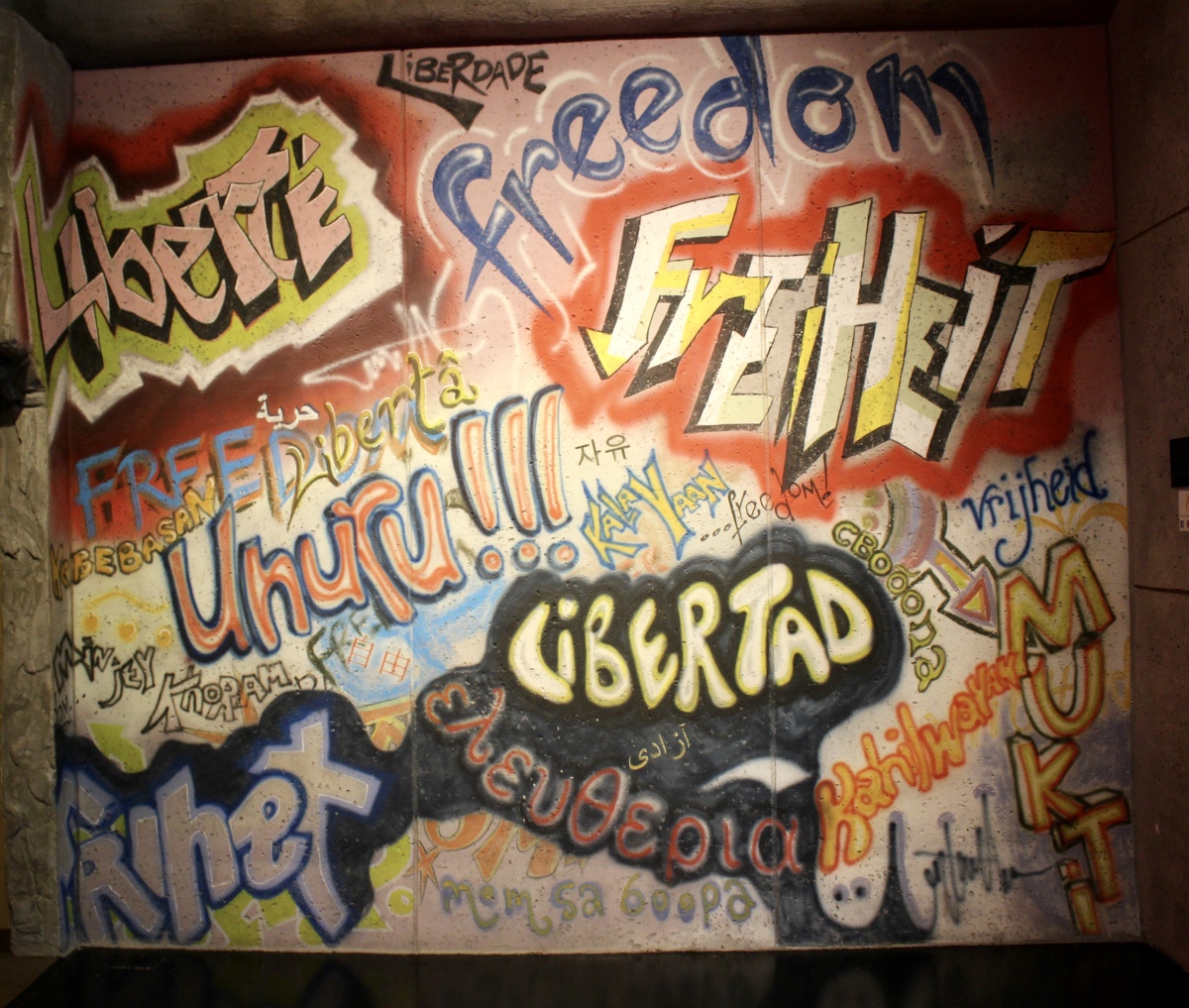
graffiti about freedom

National Underground Railroad Freedom Center
I learned that as recently as 2005, Alexandre Dos Reis shoveled charcoal, converted to pig iron and used to make steel for automobiles and appliances, in a Brazilian rain forest camp. He worked 6 days a week in tropical heat and slept in a windowless shack; his toilet was any patch of ground around. A labor inspector called it out for what it was: slavery.

slave shoveling charcoal
I learned that nearly 220 million children under age 18 are common laborers and of that number about 20 million work in factories and fields; many are exploited and mistreated. Eighty million African children are currently working. Children as young as 13 are forced into militias, in places such as Sierra Leone, and forced to kill.

child slaves
The museum defines what slavery is.

Modern day slavery defined
I learned the economic justifications for slavery — greed and the demand for inexpensive goods and services. The workers who make these products ares seen as dispensable, and employers keep wages low. Some $21 billion is extracted from workers annually through forced labor; adding commercial sex exploitation, coerced labor surpasses $30 billion per year. Annual elicit profits from sex exploitation in London alone equals £53 million – or about $80 million.

Costin
I learned of the horrible and long history of slavery. The Transatlantic Slave Trade (1500-1886) compelled millions of unwilling Africans to the Americas.
In America, between 1790 and 1860, the number of enslaved people in America grew from about 790,000 to 4 million people. Most eastern cities had slave markets, including Washington, Richmond and Charleston. Thriving slave markets grew along the river routes and former westward Indian routes, such as in Louisville, Lexington, Memphis and Natchez. New Orleans was the largest slave market in the south, mostly selling women as domestic servants or as prostitutes.

slaves and their captors

white men in the slave trade
The primary crops of the American slave societies were sugar, tobacco, rice, and cotton, which needed as much slave labor as possible. The growth of these crops fueled the slave trade. Slavery involved brutalities of every possible sort, including the branding, beating, whipping, and scarring of human beings being treated like “chattel” or property. Practices were barbaric but were allowed to continue because slave owners were politically powerful in Congress.

tobacco
The Declaration of Independence, drafted by Thomas Jefferson, a wealthy Virginia slave owner, in 1776, was largely an indictment of the King of England, justifying the Revolution against English rule. It proclaimed that “all men are created equal” and that they had the right to “Life, Liberty, and the Pursuit of Happiness.” The language was intended to justify American Independence from Britain, but could have been seen as a justification for slaves revolting against their masters.
Free black people moved into the northwest territories, establishing settlements in cities such as Cincinnati, and farms in rural locations as well. These people eventually aided runaway slaves escaping from the nearby states of Kentucky, Virginia and elsewhere. Black churches, schools, benevolent societies and other institutions established by free blacks in New England and the Mid-Atlantic states aided runaways to escape and to remain free. Though blacks were legally free in these areas, they still experienced racial discrimination and white violence.
Free black men became activists against slavery. James Forten (1766-1842) invented a sail that made guiding ships easier and became one of the wealthiest men in Philadelphia. His fortune allowed him to buy the freedom of many enslaved people, and he donated money to start and maintain abolitionist newspapers, including The Liberator, established by William Lloyd Garrison, a white man who also spent his life fighting for women’s suffrage, temperance, and pacifism. Elijah Parish Lovejoy (1802-1837) formed an anti-slavery newspaper, originally the St. Louis Observer; three presses were destroyed by an anti-abolitionist mob in Alton, Illinois, and he was shot in the last incident.

printing press
Pro-slavery advocates argued that slavery was a “necessary evil.” They found Biblical references for their position, especially in the Old Testament. Others argued that Christian planters had brought the “heathen” Africans to the true religion. Others feared possible retaliation by the slaves and felt that emancipation required sending the slaves somewhere else, such as Africa or South America.
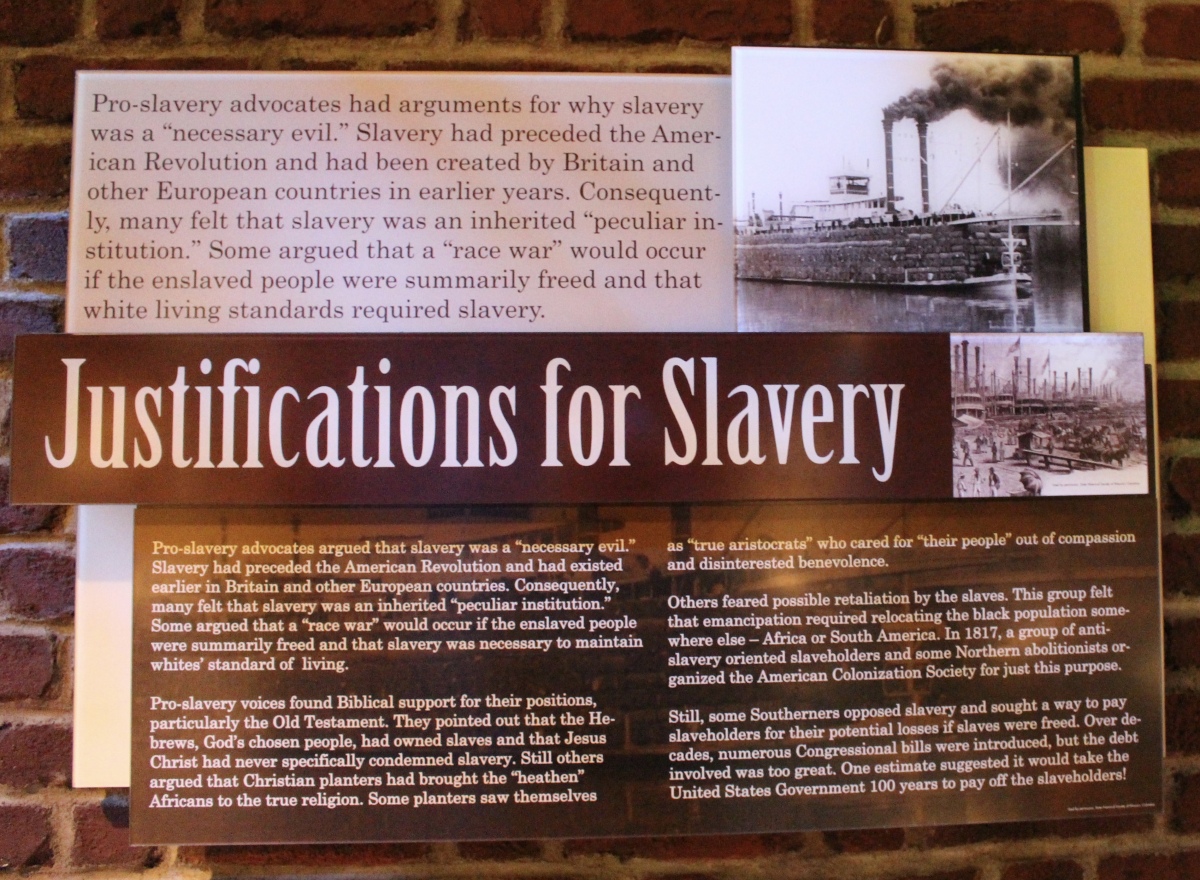
Justifications for Slavery

slave exhibit
With the election of Abraham Lincoln in 1860, South Carolina seceded from the Union and formed “The Confederate States of America,” with Jefferson Davis as their president. When South Carolina demanded the surrender of Fort Sumter and then attacked it on April 12, 1861, the Civil War began.
President Lincoln released the Emancipation Proclamation in 1863, in the middle of the Civil War. He declared the freedom of all slaves within Confederate territories not under Union control by January 1, 1863. It did not free slaves within the border states of Delaware, Kentucky, Maryland, Missouri or West Virginia nor did it free slaves in Confederate territories under Union control. It was intended to disrupt and weaken the Confederacy’s will to fight, and to eliminate the possibility of foreign intervention on the Confederacy’s behalf. The proclamation made clear that the U.S. Army was fighting a war of liberation.
Slavery was not legally dead until the passage of the 13th amendment to the U.S. Constitution in late 1865.
The Anderson Slave Pen is one of many structures strewn throughout the mid-South. These pens or jails were used to hold slaves – for days, weeks, or even months – as they were force-marched south. Inside them, the enslaved endured brutal conditions, chained together, often strangers to each other, shackled in place, sometimes forced to relieve themselves where they were.

Anderson Slave Pen

Anderson Slave Pen
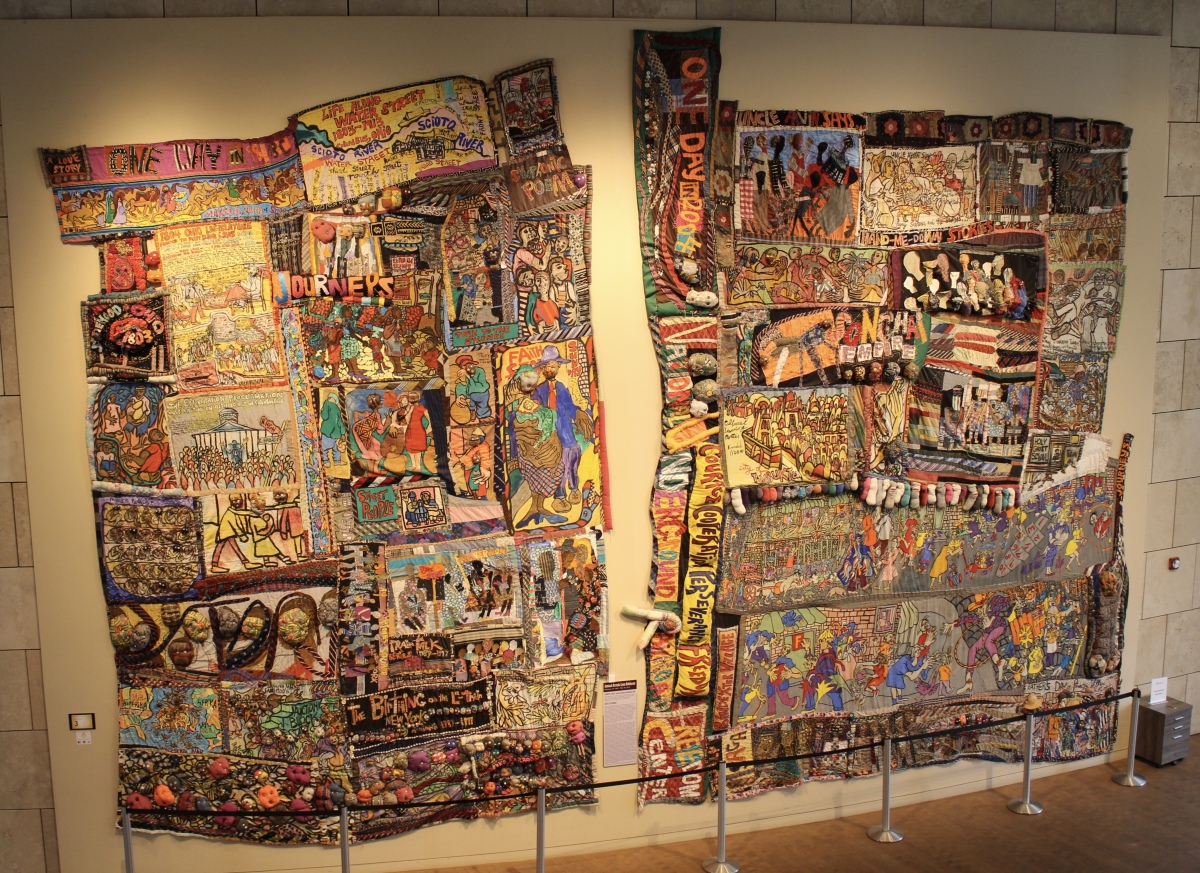
quilt about slavery

mural about slavery
I learned about brave people who helped slaves to escape from the south via the Underground Railroad. I learned of the places where they hid, in existing root cellars and other out-of-the-way rooms, which sheltered them until they could move closer to freedom. People developed signals indicating when it was safe to approach their homes: a row of white bricks in the chimney, a lantern burning on a pole, a flag in the hand of a small statue in the front yard. Runaways would say they’d been sent by “the friend of a friend.”

safe houses

routes on the Underground Railroad
Some “conductors” – people who guided runaways to safe houses – made secret hiding places in their wagons, creating “false bottoms” under which slaves could hide.
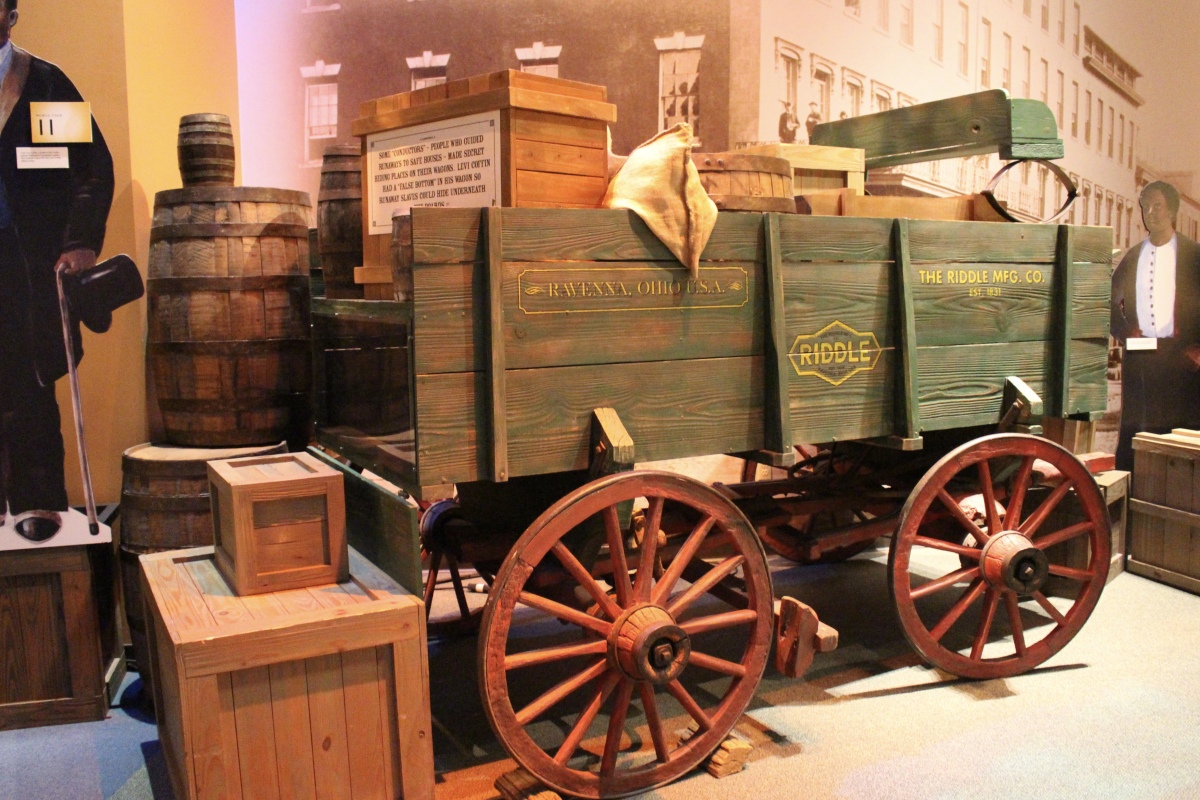
Wagon with “false bottom”

Josiah Henson’s words

Harriet Tubman’s words
I learned of brave people like Rosa Parks, John Brown, and so many others who fought not only against slavery but also dehumanizing behavior by white people toward people of color.
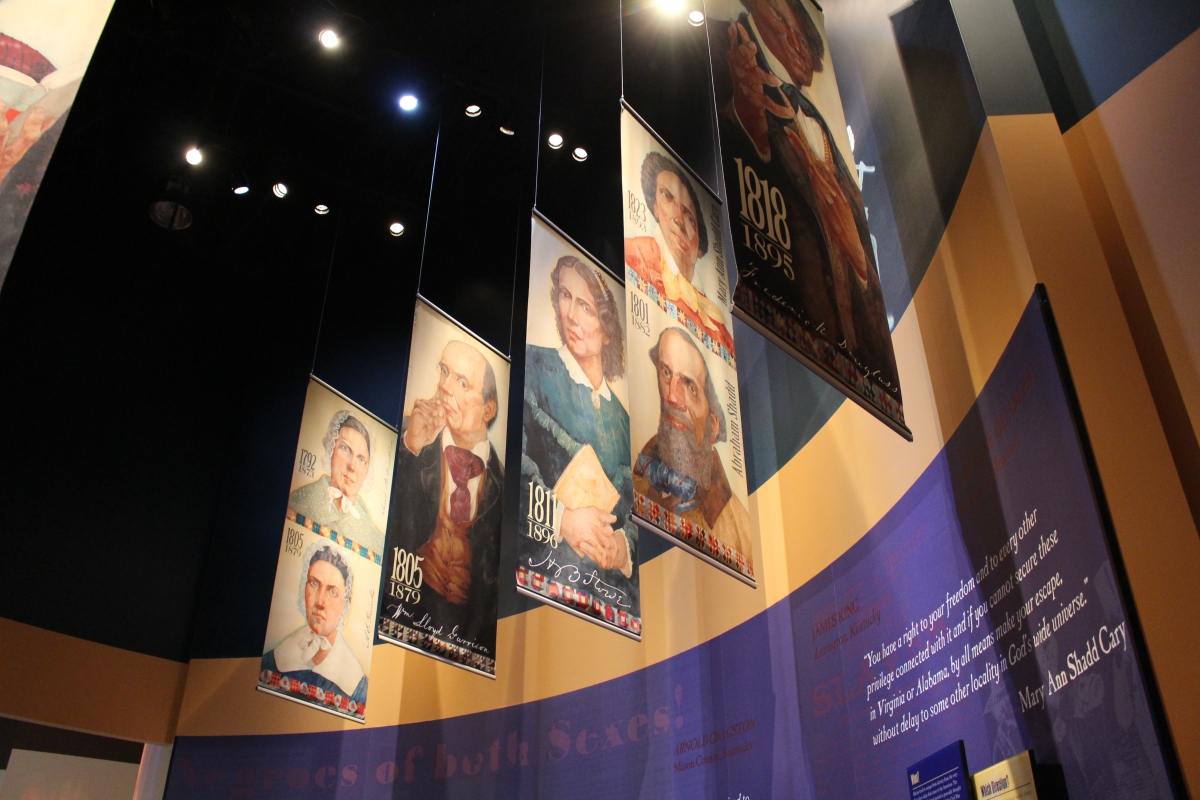
famous people
Famous blacks worked for the cause, such as Absalom Jones (1746-1818), who, after buying his way out of slavery, founded the Free African Society, and led the struggle to give Afro-Americans control over their religious worship. John Jea, who gained his freedom after the Revolutionary War, became an itinerant Methodist minister and worked tirelessly against slavery. Frederick Douglass (c. 1817-1895) was highly discouraged by the Fugitive Slave Act in 1850 and by the Dred Scott Supreme Court decision, but was galvanized by the Civil War; he lobbied with President Lincoln and others for the recruitment of colored soldiers.
John Brown (1800-1859) was a white man whose mission in life was the anti-slavery cause. In 1859, with 20 men, he raided the federal arsenal at Harper’s Ferry, Virginia in hopes of gaining weapons for a slave uprising. However, most of his men were killed by a band led by Colonel Robert E. Lee, and he was tried for treason, convicted, and executed.

chains of slavery
I got to do the Rosa Parks experience, a virtual experience where I took the place of Rosa Parks and saw through her eyes the people on the bus on December 1, 1955 (I was 36 days old at that time). I wanted to spit in those white men’s faces. Rosa Parks was very kind and dignified in her refusal to move.
What a shameful history we have in our country!

The Rosa Parks Experience
The saga of man against man will, I fear, continue until humans are eradicated from the planet by their own doing. It’s hard to have hope that humanity’s basest instincts will ever change, as evidenced by current events in our world. I can dream, I suppose, that people will wake up and learn to love and accept people who are different than they are, people of all religions, races, cultures, sexes, sexual preferences and political beliefs. But my hope is dwindling to a thin frayed thread.
**********************
“PROSE” INVITATION: I invite you to write up to a post on your own blog about a recently visited particular destination (not journeys in general). Concentrate on any intention you set for your prose.
In this case my intention was to write a post reflecting on a theme for the day. My theme for today was “man vs. man.”
It doesn’t matter whether you write fiction or non-fiction for this invitation. You can either set your own writing intentions, or use one of the prompts I’ve listed on this page: writing prompts: prose. (This page is a work in process.) You can also include photos, of course.
Include the link in the comments below by Monday, September 9 at 1:00 p.m. EST. When I write my post in response to this invitation on Tuesday, September 10, I’ll include your links in that post.
This will be an ongoing invitation. Feel free to jump in at any time. 🙂
I hope you’ll join in our community. I look forward to reading your posts!
the ~ wander.essence ~ community
I invite you all to settle in and read a few posts from our wandering community. I promise, you’ll be inspired. 🙂
- Jude, of life at the edge, wrote a sensuous post about a drowsy summer day.
Thanks to all of you who wrote prosaic posts following intentions you set for yourself. 🙂
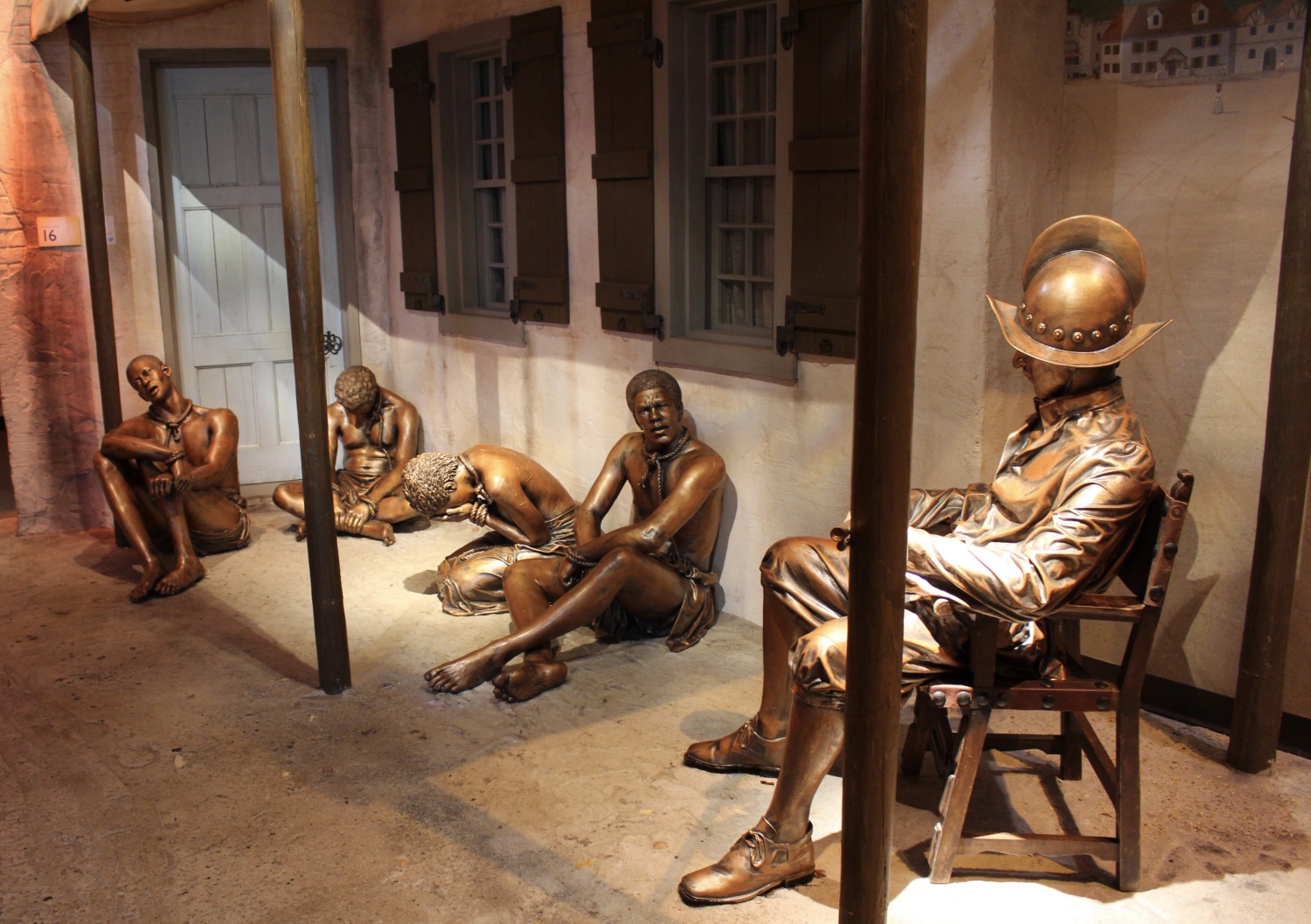



A very informative post, Cathy, and I’m afraid I have to agree with your comment that “The saga of man against man will, I fear, continue until humans are eradicated from the planet by their own doing.”
LikeLike
It’s really disheartening to realize that even when it seems for a while that mankind is making progress, evidence that we are going backwards keeps rearing its ugly head.
LikeLiked by 1 person
Absolutely
LikeLiked by 1 person
Modern slavery: today people work in Germany for € 5 per hour partially, in comparison when I worked as a student in the early 1980s € 5 per hour was the usual minimum wage I have received (also for more ordinary works). Disgusting globalized and unsocial liberalism enables such ruthless fraud!
LikeLike
I agree, Ulli. It really is unconscionable.
LikeLiked by 1 person
Thank you for taking me to these very inspiring museums, which I will put on my travel list should I visit your country again. What you write about also ties in well with a movie I recently watched, „The hate you give“, which has left a deep impression.
LikeLike
Thank you so much for visiting and reading, and for your comment. I haven’t seen that movie, so thank you for bringing it to my attention. I hope I can find it and watch it soon.
LikeLiked by 1 person
Two interesting and informative museums. I find it horrifying what people can do to each other, and tend to agree it’s not going to end anytime soon as we now seem to be going backwards.
LikeLike
I agree. It seemed appropriate at this time that I happened upon these museums, which are stark reminders of our horrible history that is still with us today.
LikeLiked by 1 person
Very interesting and so sad.
LikeLike
It was very sad. Much like going to the Holocaust Museum or the American Indian Museum.
LikeLiked by 1 person
A dark, dark post. I think I share your hopelessness about any chance of man vs man changing. I’m about to return to an unfinished post about the Jewish museum, as another example – and then there’s Australia’s appalling treatment of refugees. But I guess in all cases here are appalled people who take action.
You do museums well. I find such posts extremely difficult.
LikeLike
Yes, it was a very dark post, I agree, Meg. And believe me, it was hard to visit these museums and hard to write about them and all the history they tell. I’ll be interested to read about your Jewish Museum. And about Australia’s appalling treatment of refugees. Ours is equally appalling. It seems everything we once stood for in the world is eroding, not that we’ve ever been great at upholding the hope we purport to offer.
LikeLike
A powerful and moving post, Cathy. I really admire Muhammad Ali: poet, athlete, activist, larger than life. He used his celebrity and charisma not just to forward his own career, but to inspire others to be better. To make things better. To stand up for what is right. The Muhammad Ali Center looks very interesting. I’m hoping to make a visit to Mammoth Cave NP this fall and will try to make a side trip to Louisville to see it.
The National Underground Freedom Center is one of those museums that is…well…because I cannot think of a better way to phrase it, “uncomfortable” to visit. But necessary. If only every single person in this country were required to visit, to be forced to remember the horrors of slavery, to be reminded (or made aware) that it is sadly still practiced throughout the world, and we cannot just say that ugly chapter of history is behind us.
It is hard to be hopeful. To not be sucked into a pit of despair thinking of the direction we are quite probably headed. Without forgetting, or putting my head in the sand, I try to find the beauty in the little things, and the kindness of the many people I meet gives me a little spark of hope.
LikeLike
Thank you so much for your thoughtful comments, Marsi. I admire Muhammad Ali too; he was controversial and full of gusto and confidence, but also a man of great convictions who had to endure a lot of criticism for his beliefs. If you go to Mammoth Cave NP, it seems you just might be able to drop by Louisville to see this museum.
I also agree that everyone should be required to visit these “uncomfortable” museums, as well as Holocaust Museums and Native American museums. If people visited these museums with a strong desire to learn and with an open mind, maybe people would wake up to the horrors of hatred in our world.
You’re also right to go about approaching life a day at a time, looking for small kindnesses, and appreciating them when they come along. There are a lot of good things that happen in the world as well, but sadly they don’t often get the news coverage. Each day, we can all do our little bit. 🙂
LikeLiked by 1 person
I wholeheartedly agree on all counts, Cathy! XO
LikeLiked by 1 person
Thanks for sharing this post Cathy .. it is such a shame that history cannot be history and we learn from it. It is bad enough that these things happened but even worse that they are being repeated again, increasingly, today.
LikeLike
I agree, Albert. It makes me despair to think not only that we are becoming more hateful people, but that we’re now on a course to destroy our planet. I feel sorry for future generations who will have to clean up the mess our governments, corporations and older generations are making.
LikeLiked by 1 person
The things that man can do against man are appalling and shameful and seemingly never ending. Too many seeking power and control and wealth with total disregard to humanity. The lives of so many in the poorer countries are not worth anything to these people so they can easily be abused, misused and replaced. We are all to blame for the desire for more and cheaper products: the amount of stuff that gets thrown away is indicative of the disposable society we live in. Things need to change, but are we willing to pay the price? Like you I am at the point where I believe that the planet will only improve once humans have left it. Whether or not there will be anything left by then is anybody’s guess. A good post Cathy even though one that makes for hard reading.
LikeLike
You are so right, Jude. I have felt more hopeless in the last several years; I’m pretty sure I can pinpoint the exact date, the nightmare that began with Trump’s election on November 8, 2016. Before that, I’d been successfully able to tune out politics and the state of the world, but now it is really in your face. It is all about greed, amassing wealth, power and control. And I do agree, we are all to blame with our endless desires and consumer mentality, always looking for cheaper goods. I’m as guilty as the next person in that regard, but I am setting intentions to make less impact on the planet in my remaining years, as I bow out gracefully, I hope! Thanks, Jude. I know it wasn’t easy to read; neither was it easy to visit these museums and then to write about them.
LikeLiked by 1 person